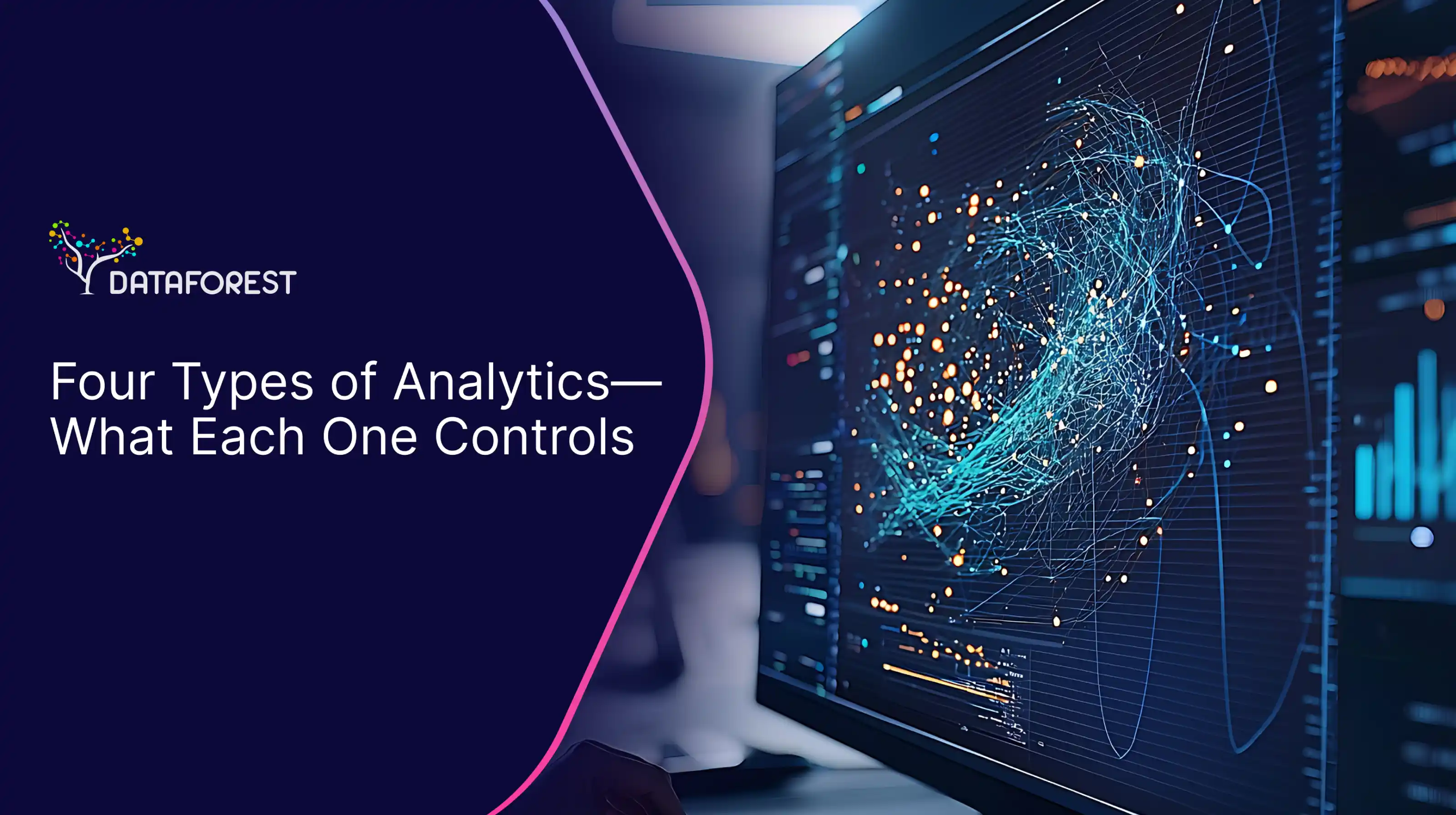Inventory turnover visualizations are pivotal in decoding complex inventory data and transforming it into actionable insights. These inventory data visualizations offer a clear perspective on sales velocity and inventory management, which is crucial for enhancing business performance. For instance, recent studies indicate that 71% of companies monitor inventory accuracy closely, boasting an impressive 91.4% average accuracy rate. Furthermore, 67% of companies keep a vigilant eye on their inventory turnover rate, with an average turnover of 9.1% reflecting the brisk pace of sales and stock replenishment.

By leveraging inventory turnover visualizations, businesses gain more than just data. Integrating advanced AI techniques, as detailed in our AI Integration services, enhances the predictive capabilities of these visualizations, making them even more effective for strategic planning. They acquire a strategic tool to analyze, calculate, and optimize their inventory strategies effectively. These interactive visualizations provide a unique perspective, allowing companies to interpret inventory turnover meaning through various lenses. This strategic advantage is crucial for enhancing store performance, optimizing profit margins, and maintaining a competitive edge in the retail landscape.
Inventory turnover visualizations are tools for reflection and proactive instruments that guide future business strategies. They are essential for businesses that navigate the complexities of market demand and supply chain efficiency. With these visualizations, companies can forecast future trends, prepare for market fluctuations, and ensure that their inventory levels align precisely with anticipated customer demand. Leveraging predictive analytics as a service further refines these forecasts, enabling businesses to anticipate market changes more accurately. This strategic approach secures a robust operational framework for sustained growth and profitability.
As DATAFOREST dissects the visual representations, from bar charts showcasing average inventory against sales to heat maps delineating inventory days across geographies, we dive deeper into the essence of inventory turnover ratios. Our expertise in machine learning in data science is crucial for dissecting complex data patterns and improving decision-making processes. Each visual is a puzzle piece, providing the clues necessary to elevate a company from good to great.
Unveiling Inventory Turnover
Inventory turnover visualizations represent a critical financial measure known as inventory turnover or stock turnover. This measure quantifies the rate at which a company sells and replenishes its stock within a specific period, commonly one year. The formula for calculating inventory turnover involves dividing the cost of goods sold (COGS) by the average inventory for that period. High inventory turnover ratios revealed by inventory turnover visualizations indicate efficient sales processes and quick replenishment. In contrast, lower ratios signal sluggish sales and potential capital blockages due to excessive inventory.
Inventory Turnover's Influence on Business Outcomes
Inventory turnover visualizations significantly influence both a company’s financial standing and its operational efficiency in numerous ways:
- Cash Flow Enhancement: Inventory turnover visualizations highlight how effectively inventory is managed, ensuring businesses avoid excessive stock that ties up cash, thus optimizing resource allocation.
- Profit Maximization: Effective inventory turnover, as demonstrated through inventory turnover visualizations, can boost profitability by decreasing costs related to storage, insurance, and product obsolescence.
- Operational Excellence: Inventory turnover visualizations that show a high turnover ratio indicate that a company’s inventory management and supply chain operations are highly efficient, reducing the likelihood of stockouts and surplus inventory.
- Customer Satisfaction Improvement: Maintaining optimal inventory levels, as shown in inventory turnover visualizations, ensures products are available to meet customer demand, enhancing customer satisfaction and fostering loyalty.
Advantages of Inventory Turnover Visualizations
Leveraging inventory turnover visualizations gives businesses essential benefits that enhance decision-making and streamline operations. Here’s how inventory turnover visualizations empower businesses:
- Enhanced Insight: Inventory turnover visualizations transform complex data sets into understandable visual formats like charts, graphs, and dashboards, helping stakeholders identify trends, patterns, and deviations for more profound insights and strategic planning.
- Rapid Trend Detection: Inventory turnover visualizations enable quick identification of sales spikes or declines, facilitating agile responses and adaptations in inventory strategies to prevent stock issues.
- Strategic Inventory Management: Through inventory turnover visualizations, businesses gain insights into demand fluctuations, seasonality, and product lifecycle phases, which support accurate forecasting and inventory adjustments to align with customer demands, thereby minimizing overstock and reducing storage costs.
- Supply Chain Optimization: Inventory turnover visualizations enhance supply chain coordination by providing a shared, clear view of inventory metrics to all stakeholders, including suppliers and distributors, which helps in synchronizing demand forecasting, production schedules, and inventory replenishment.
- Proactive Risk Management: Inventory turnover visualizations help identify potential supply chain risks and market shifts, allowing businesses to address these challenges and maintain continuity and resilience preemptively.
By integrating inventory turnover visualizations into their analytical framework, companies can streamline inventory management and improve overall business performance, making these visualizations indispensable in modern business operations.
Explore how our supply chain dashboard case study illustrates the application of these visualizations in a real-world scenario, enhancing inventory management and operational efficiency.
Exploring Types of Inventory Turnover Visualizations
Inventory turnover visualizations are vital for effectively analyzing and interpreting inventory management metrics. These visual aids come in several forms, each suited for different analytical needs. Let's delve into the array of visualization types and their applications in enhancing understanding of inventory dynamics.
Advanced Tools and Techniques for Creating Inventory Turnover Visualizations
In the digital age, sophisticated tools are available to create detailed and dynamic inventory turnover visualizations, each offering distinctive features to suit diverse business environments.
- Tableau: Renowned for its user-friendly interface and powerful visualization capabilities, Tableau allows for the creation of interactive inventory turnover visualizations and comprehensive dashboards. It accommodates a wide range of data inputs and provides extensive educational resources.
- Microsoft Power BI: Favored by enterprises within the Microsoft ecosystem, Power BI offers seamless integration with Microsoft products, enabling real-time data processing and sophisticated interactive visualization capabilities.
- Google Data Studio: As a cost-effective, accessible option, Google Data Studio facilitates the crafting of customizable reports and dashboards from various data sources, which is ideal for integrating with other Google services for a cohesive analytical experience.
Comprehensive Guide to Developing Inventory Turnover Visualizations
Step 1: Data Preparation for Inventory Turnover Visualizations
Begin your inventory turnover visualizations by meticulously gathering and organizing your data. This includes compiling your inventory turnover ratios over designated periods. Ensuring accurate and comprehensive data is critical, as it forms the foundation of compelling inventory turnover visualizations.
Step 2: Selecting Tools for Inventory Turnover Visualizations
Choose a robust visualization tool that meets your needs, considering user-friendliness, integration capabilities, and advanced features. Tableau, Microsoft Power BI, and Google Data Studio are popular choices for crafting detailed inventory turnover visualizations.
Step 3: Data Importation into Visualization Software
Once you've selected your tool, import your inventory turnover data. Ensure the data is correctly formatted, typically with columns representing periods and corresponding inventory turnover ratios, to facilitate smooth inventory turnover visualizations.
Step 4: Crafting the Initial Inventory Turnover Chart
Using Tableau as an example, here’s how to start your inventory turnover visualizations:
- Connect Tableau to your data source.
- Drag the "Period" field to the Columns shelf and the "Turnover Ratio" field to the Rows shelf.
- Tableau automatically generates a bar chart illustrating your inventory turnover ratios over time. This chart will serve as a fundamental structure for your inventory turnover visualizations.
Step 5: Customizing Inventory Turnover Visualizations
Enhance your inventory turnover visualizations by customizing them for greater clarity and impact:
- Label axes clearly to elucidate the data points.
- Add a descriptive title to clarify the chart's purpose.
- Incorporate a trend line or moving average to underscore long-term trends in inventory turnover.
- Use color coding to distinguish among different product categories or performance metrics.
- Embed annotations or tooltips to offer deeper insights into user interaction, enriching the inventory turnover visualizations.
Step 6: Amplifying Interactivity in Inventory Turnover Visualizations
Integrate interactive elements into your inventory turnover visualizations to enable a deeper exploration of the data:
- Implement filters to allow viewers to examine specific product categories or time frames.
- Enable drill-down features to provide a more granular view of the inventory turnover data, making the inventory turnover visualizations informative and engaging.
Step 7: Refinement and Review of Inventory Turnover Visualizations
Review your inventory turnover visualizations critically to ensure they effectively communicate vital insights:
- Assess the clarity and impact of the visualizations.
- Solicit feedback from peers or stakeholders to refine the visualizations further.
- Make necessary adjustments to improve the readability and effectiveness of your inventory turnover visualizations.
Expert Tips for Enhancing Inventory Turnover Visualizations
- Maintain clarity with concise labels and straightforward explanations.
- Use visual elements like color, size, and shape strategically to highlight important data points or trends.
- Contextualize data with relevant background information or detailed annotations.
- Conduct usability testing with different audiences to ensure the inventory turnover visualizations are intuitive and user-friendly.
By meticulously following these steps and utilizing the tips provided, you can create powerful and insightful inventory turnover visualizations that display data and tell a compelling story about inventory management practices and trends. This approach ensures that inventory turnover visualizations are functional and instrumental in strategic decision-making.
For an in-depth look at how AI technologies are revolutionizing the e-commerce sector, including inventory management, check out our detailed analysis of how AI can boost the e-commerce industry.
Harness DATAFOREST’s Expertise for Enhanced Inventory Turnover Visualizations
Inventory turnover visualizations are about seeing the numbers and understanding and acting on them. DATAFOREST's proficiency in interactive data visualization and data-driven decision-making processes enables businesses, especially SMBs, to transform their inventory management strategies. Companies can precisely pinpoint efficiency gaps and identify improvement opportunities by following a structured process from data collection to insightful visualizations.
Are you ready to transform your inventory management and achieve optimal efficiency? DATAFOREST is here to assist you every step of the way—from collecting and integrating your data to creating advanced interactive data visualizations that drive decisions. Leverage our data science and visualization expertise not to see your data but to genuinely understand and act on it.
Discover how DATAFOREST can tailor inventory turnover visualizations to your specific needs and help you harness the full potential of your data. Take the first step towards data-driven excellence. Partner with DATAFOREST and ensure your inventory is as dynamic and responsive as your market demands.
FAQ
What are common mistakes businesses make when visualizing inventory data?
When it comes to inventory turnover visualizations, businesses often need to work on complicating the visuals excessively, paying attention to the quality of underlying data, and overlooking the specific needs of their audience. A crucial mistake is the lack of contextual understanding in inventory turnover visualizations, which can lead to misinterpretations—such as mistaking correlation for causation. These errors not only skew the interpretation but can also misguide business decisions.
Can inventory turnover visualizations integrate with other business intelligence tools?
Inventory turnover visualizations are versatile and integrate seamlessly with other business intelligence tools. This integration enriches decision-making, enabling a holistic view of business operations across sales, finance, and supply chain sectors. By leveraging inventory turnover visualizations, companies can synchronize various data streams, leading to more cohesive and informed strategic planning.
How do seasonal variations affect inventory turnover visualizations?
Seasonal trends play a pivotal role in shaping inventory turnover visualizations. These variations affect demand patterns, disrupt supply chain logistics, and complicate inventory forecasting. Recognizing these factors in inventory turnover visualizations can help businesses anticipate changes in demand and adjust their inventory management strategies accordingly, ensuring they remain agile and responsive to market dynamics.
How can companies use inventory turnover visualizations to improve online sales channels?
Inventory turnover visualizations are instrumental for e-commerce strategies, especially optimizing online sales channels. These tools aid in refining demand forecasting, selecting inventory based on consumer demand trends, and crafting targeted promotional campaigns. Additionally, inventory turnover visualizations provide valuable insights that help businesses manage stock levels effectively, preventing overstocking or stockouts during peak seasons.







.svg)


%20(1).webp)















